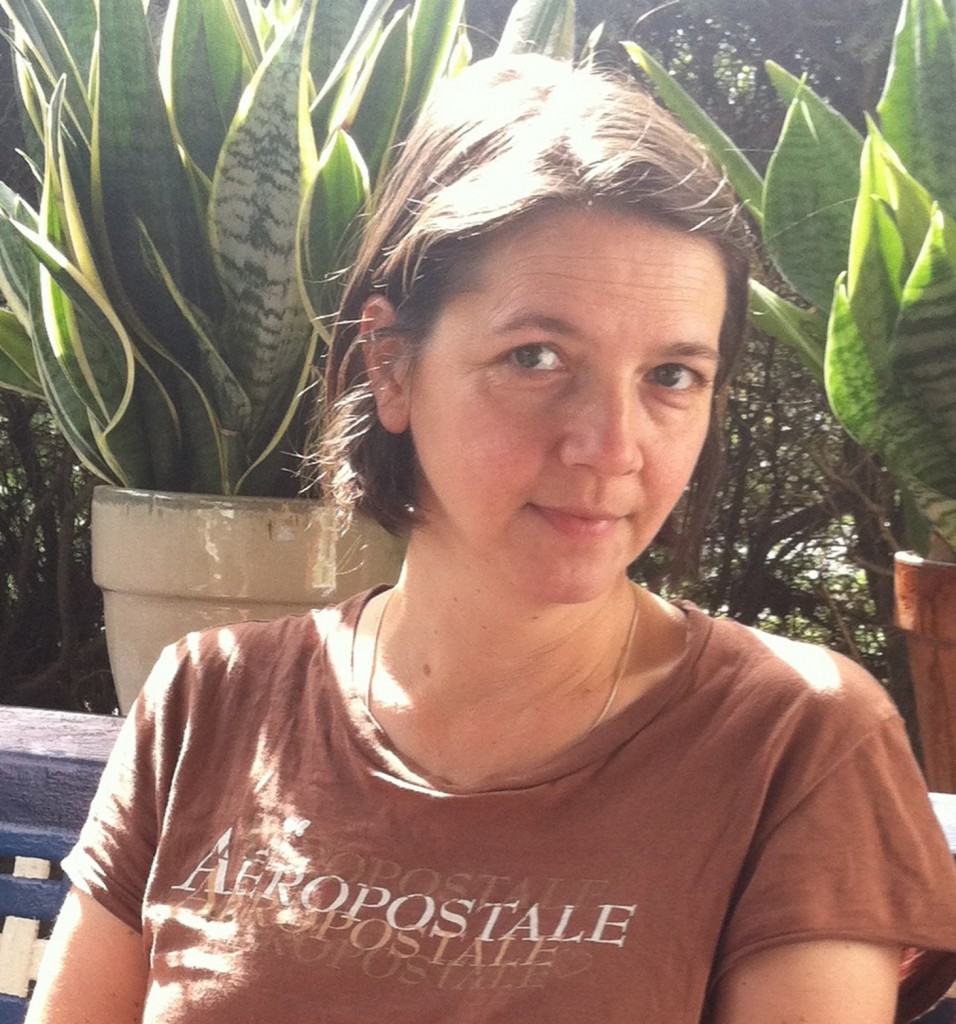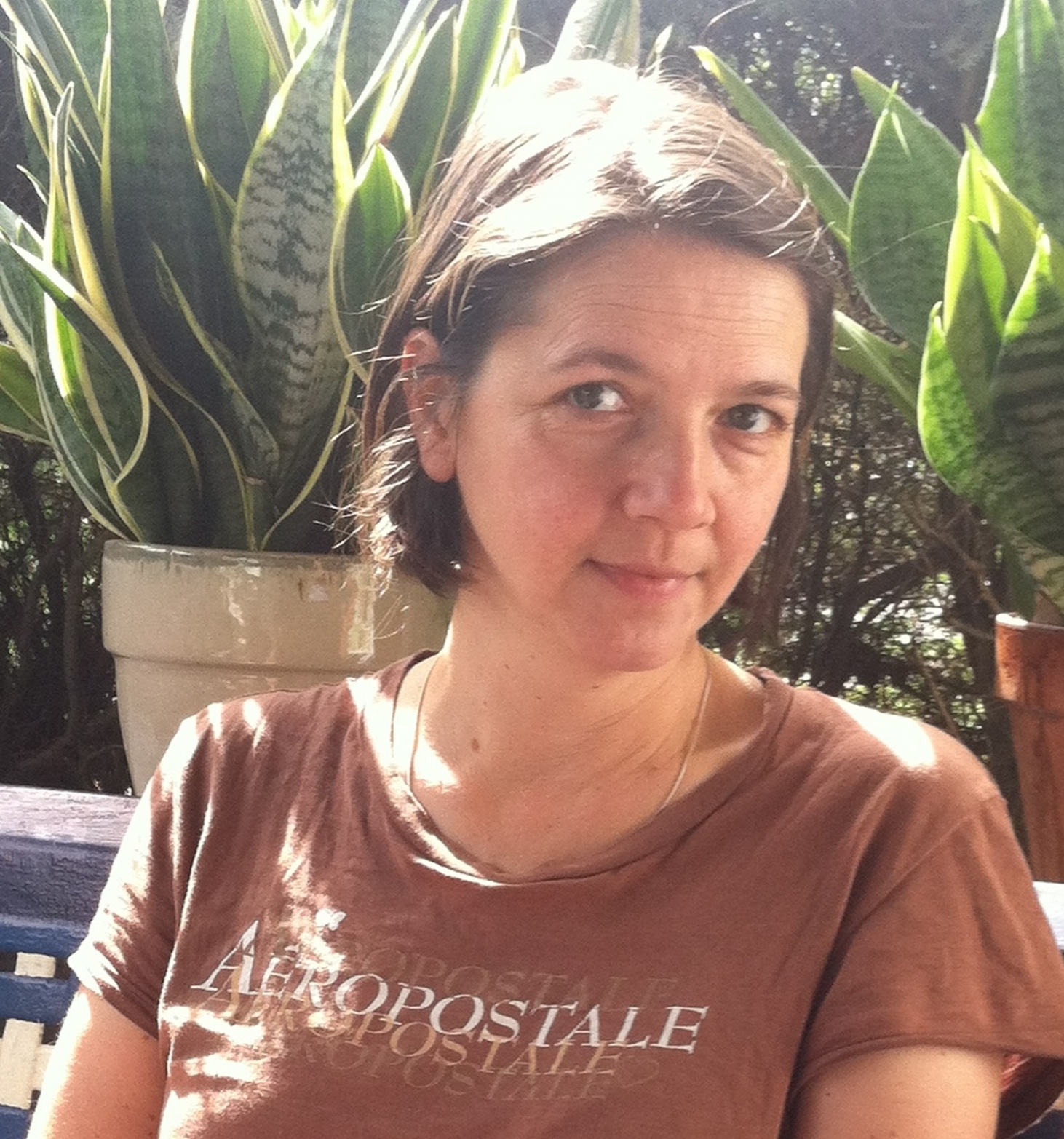
A thumbnail description doesn’t do justice to Mimi Lipson’s collection The Cloud of Unknowing–it takes theoretically familiar elements and fractures them, allowing for new perspectives and playing with sequence in memorable ways. The collection initially centers around the Schultz family, first zeroing in on the slow breakdown of the marriage in the 1970s, then gradually focusing on one of that family’s younger generation, a woman named Kitty, who eventually embarks on a relationship with a sometimes charming, sometimes infuriating man named Isaac. Whether focusing on academics, restaurant workers, or punks gathered in out-of-the-way venues, Lipson writes with deftness and veracity. I checked in with her via email to learn more about the collection’s origins, her work with stained glass, and the memorable fractured chronology of the collection’s final third.
The stories in The Cloud of Unknowing center around a particular group of characters; was the intention always to collect them in this form, or did the structure reveal itself as you were assembling the collection?
The latter. What happened was, I wrote a Kitty and Isaac story—“The Minivan”—and then I wrote another, and then another. I wanted to keep writing about them, but already some details were not consistent across the stories. So I got an idea of a whole book of Kitty and Isaac stories where they would meet and part differently each time. That seemed like an interesting formal experiment. But then I kind of said screw it, and instead I changed the names of the characters in some of the stories. Meanwhile, I’d written the first three Schultz family stories. Those three were always going to be a group. I named Lou Schultz’s daughter Kitty, because she was kind of a prequel to Kitty in “The Minivan.” When I put all the stories together as a collection, I realized there was no reason not to link them, so I did a whole bunch of character renaming. The Food & Beverage stories existed first as a homemade chapbook, all in first person, so those didn’t even require any name changes. I tweaked a few details, but I let stand those contradictions in the Kitty and Isaac stories—in memoriam to my abandoned experiment.
I’d been wondering about the contradictions in the Kitty and Isaac stories. I took it as a kind of expansion of the way that couples sometimes rewrite the stories of how they first met. I’m curious how people who have read them as a group have reacted to them–do they see the contradictions as a device? Do they view them more as variations on the same theme?
No one has said a word to me about it! I wonder if they’re too embarrassed, because they think I really goofed up the continuity.
Do you have one particular outcome for Kitty and Isaac that you feel more strongly about than the others?
“Mothra” ends with the outcome in the balance, which is maybe interesting. Isaac fucks up so bad in that one that you really have to wonder if Kitty gives him the boot—though maybe you know Kitty well enough by then to suspect that she will forgive him. But I think the outcome for Kitty and Isaac in “the_lettuce,” the last story in the book, is the most strongly articulated. That story is about the outcome as much as anything else. “Maybe this was just adult life, she told herself, this feeling of entanglement”—that’s from the beginning of the story, and it’s kind of where the story ends up. Which is funny, because arguably those two never achieve adulthood in a normal way.
Your interview with Sara Ryan includes some images of your stained-glass art. When did you start making this? Do you find any relationship between it and your writing?
I started making stained glass in 2006, which is around the time I started writing with serious intent. I guess you could say there’s a common sensibility. At one time I had a website for the stained glass—one of my Kramden-esque schemes for monetizing my hobbies—and I asked my boyfriend to write some copy for it. I should say that my boyfriend is Luc Sante, who is obviously a better writer than I will ever be. I’ll tell you a secret: he also wrote the jacket copy for The Cloud of Unknowing. Anyhow, in describing my work he used a great phrase: “the grit and tang of the fallen world.” Maybe you could say that my stories take place in the fallen world.
A number of these stories are set in the recent past. How specific were you in looking back at the components of a setting for a particular year?
Not at all, really. That is, I don’t think I included any details as set dressing, but I also tried to avoid anachronisms. There are a few things I doubt people under a certain age will even understand—like when Kitty pulls at the bottle in the soda machine in “Lou Schultz.” Because, you see, that’s how soda machines worked in the early Seventies. The bottles were stacked automat-style, in a refrigerator with a glass door. After you put in the coins, the mechanism yoking the bottles would release, and you could yank out the bottle of your choice. The fantasy caper, of course, was to team up with someone and yank out two bottles at once.
Reading “The Breakfast Shift,” I feel like the shifts in power dynamics in the story could just as easily work in the context of something much longer. How did you find the appropriate length for that?
I think your question reflects the fact that the story doesn’t have a very neat structure. It’s one of the first stories I wrote, and I was very much working on instinct. It would have been more classically sound if the power dynamic shifted earlier—as, like, part of the “rising action” or something. That story has been singled out as a favorite in the collection by people for whom I have huge respect, but it would never stand a chance with one of your mainstream literary magazines. Thank the gods for Mike McGonigal, who published it in YETI before publishing this book.
When music does show up in the collection, it’s very specific: the Flipper tape that Kitty encounters in college; the punk bands Isaac is drawn to. What was your process like for figuring out what music your characters would encounter?
In a sense it’s no different than dressing my characters to leave the house. The music they care about (or don’t) is supposed to contribute to a portrait. And let’s face it: nothing signifies like popular music. That’s why there have been, like, five different TV commercials that use “Lust for Life” as the soundtrack. Ad men have all but given up writing jingles. When I use music, though, I hope I’m doing something beyond scoring a car ad. For instance, “The Cloud of Unknowing” is a sort of religious story, and the songs Jim and Kitty listen to are their liturgical music—a way of experiencing something beyond knowledge. Jim’s Flipper tape has the power of a talisman for Kitty.
Follow Vol. 1 Brooklyn on Twitter, Facebook, Google +, our Tumblr, and sign up for our mailing list.

